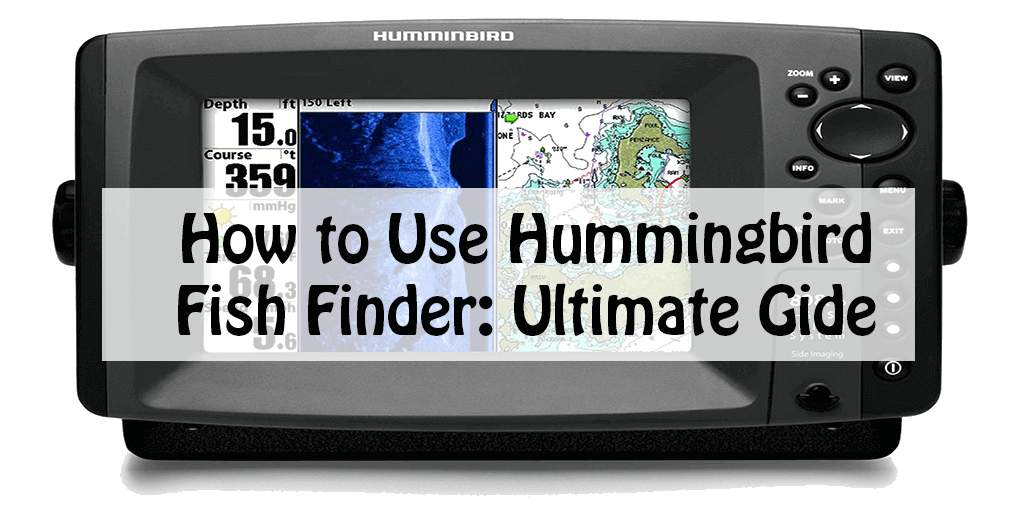

Your fishfinder will have a transducer that you install below the water line and a head unit that will most likely sit next to where you fish or troll from. Then, using the speed and strength of the return signals, it can intelligently decipher what’s down there. Sonar technology works by transmitting sound waves out into the water. To Balkcom's point, however, there was indeed a single button for navigating the device's features.Fishfinders can show you exactly what’s below your boat by using sonar technology. There was one each for on and off a third button illuminated the screen. The two-button claim was somewhat hyperbolic, in that the Humminbird LCR 1000 had a total of four. We went from $6 million to $75 million in revenues within three years and grew from 0% to 48% market share, revolutionizing the industry,” Balkcom told the bass-fishing publication Bassmaster a few years later. “One button turned it on and off and the other sequenced through features. Responding to fishermen’s complaints that fish finders were getting too complicated, the company gave the LCR only two buttons. The device had resolution high enough to identify objects floating 6 inches off the bottom, or 6 inches from each other.
HUMMINGBIRD DEPTH FINDER FREE
Anything large that was floating free above it, which in most cases would be a fish, was displayed in the shape of a fish-quite pixelated, but a fish shape nonetheless. The LCR showed the contour of the bottom in a side view. Gone Fishin’: In subsequent versions of the LCR, Humminbird upgraded to an LCD that could display color, leading to an advertising line that gained resonance with fishermen: “If it’s fish, it’s red.” Photo: Humminbirdīut if Humminbird was going to have a great new display, wouldn’t it be beneficial to have a new feature to show it off? Company engineers decided to use microprocessors to analyze the sonar signals and display graphic images of sonar cross sections of the seascape below the boat. Such LCDs were considered superior at the time to other LCDs.
HUMMINGBIRD DEPTH FINDER MANUAL
The company’s engineers chose what the LCR’s manual called a “supertwist” LCD, almost certainly a reference to the supertwisted nematic display, a type of monochrome LCD, which had just been invented by Brown Boveri in 1983. So when Jim Balkcom, Humminbird CEO at the time, was deciding what he wanted in the company’s next product, that’s what he focused on: a product that users could easily read in daylight. Worse, displays at the time were hard to see in sunlight-no small problem, as fishing is usually done outdoors and during the day. Manufacturers kept adding more alphanumeric information to each display, making it harder to figure out the data at a glance.

It was just too hard to figure out what to press to do anything. There was some feature bloat, to be sure, but the bigger problem was button bloat. It was popular-though nothing like the LCR Fish Finder, introduced in 1984.Īs a category, fish finders at the time had been getting complicated. The Super Sixty put the company on the map, so to speak. The company soon began building its own depth finders, and in 1975 it brought out its Super Sixty, the first waterproof model on the market. In 1971 he joined forces with an unidentified hospital radiologist and began modifying Heathkit depth sounders (for example, shielding them from interference) and rebranding them with the Humminbird name. Humminbird traces its roots to a small group including Tom Mann, a fishing entrepreneur. Through the 1960s, sport fishermen began using depth finders more frequently, some of them assembling their own devices from kits sold by Heathkit. Technology that makes sportfishing easier is regarded with something close to reverence. The upshot here is that fishermen tend to take the endeavor seriously. Ernest Hemingway, Zane Grey, Richard Brautigan, Thomas McGuane, and Negley Farson are a few among many who have described fishing in language ordinarily reserved for religious experiences the late author Norman McLean wrote that fishing and religion were essentially the same thing. A few years back the American Sportfishing Association estimated that over 60 million Americans had gone fishing at one time or another. In many countries, sport fishing ranks among the most common leisure activities. The combination, which Humminbird called LCR, for “liquid crystal recorder,” propelled the company to market dominance and kicked off the modern era of high-tech fishing. In 1984 Humminbird, a tiny company in Eufaula, Ala., introduced a model that was the first to incorporate a microprocessor and first to use a liquid crystal display (LCD) screen. Fishermen have been using depth finders based on sonar for decades.


 0 kommentar(er)
0 kommentar(er)
